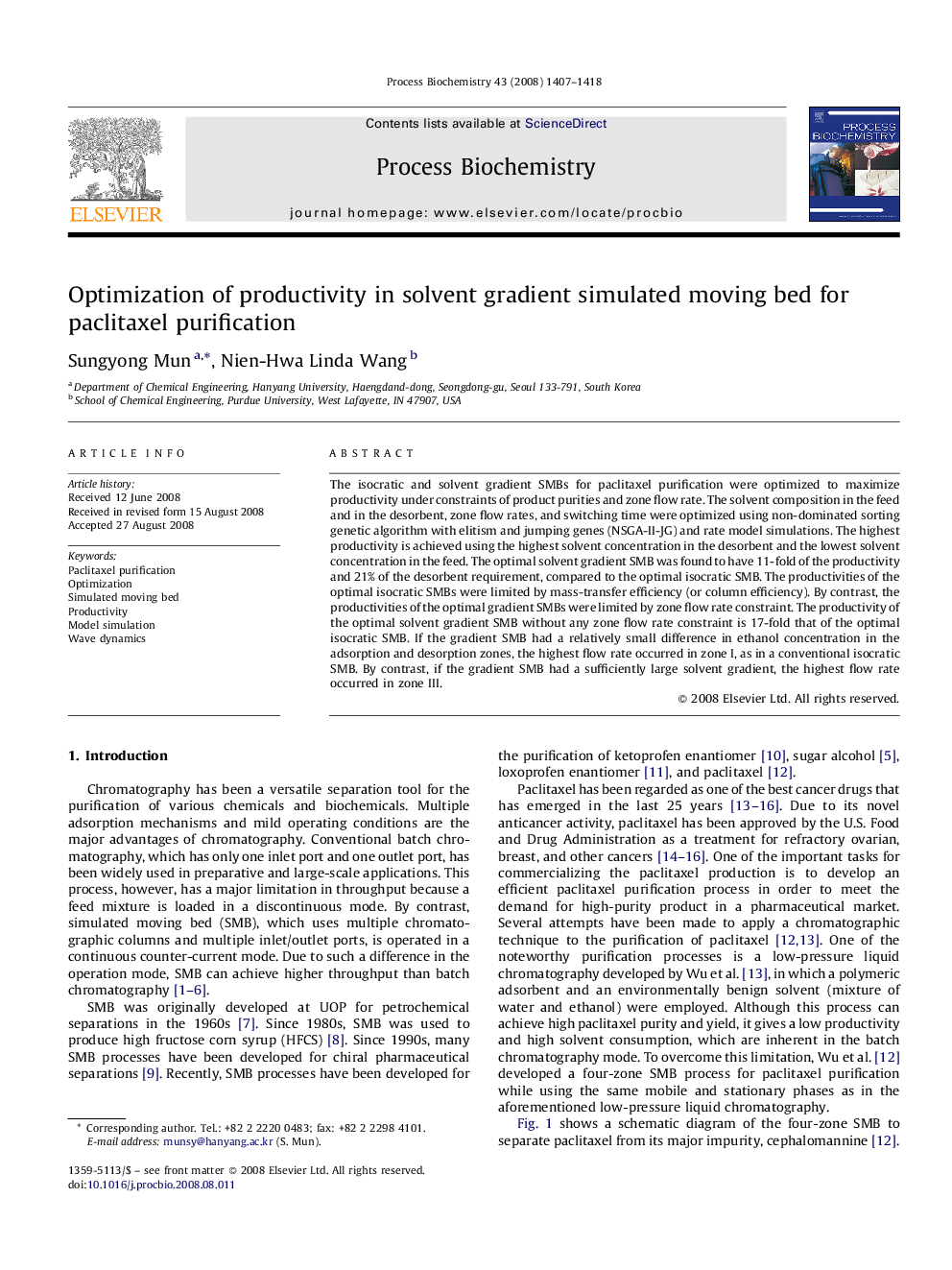| Article ID | Journal | Published Year | Pages | File Type |
|---|---|---|---|---|
| 35756 | Process Biochemistry | 2008 | 12 Pages |
The isocratic and solvent gradient SMBs for paclitaxel purification were optimized to maximize productivity under constraints of product purities and zone flow rate. The solvent composition in the feed and in the desorbent, zone flow rates, and switching time were optimized using non-dominated sorting genetic algorithm with elitism and jumping genes (NSGA-II-JG) and rate model simulations. The highest productivity is achieved using the highest solvent concentration in the desorbent and the lowest solvent concentration in the feed. The optimal solvent gradient SMB was found to have 11-fold of the productivity and 21% of the desorbent requirement, compared to the optimal isocratic SMB. The productivities of the optimal isocratic SMBs were limited by mass-transfer efficiency (or column efficiency). By contrast, the productivities of the optimal gradient SMBs were limited by zone flow rate constraint. The productivity of the optimal solvent gradient SMB without any zone flow rate constraint is 17-fold that of the optimal isocratic SMB. If the gradient SMB had a relatively small difference in ethanol concentration in the adsorption and desorption zones, the highest flow rate occurred in zone I, as in a conventional isocratic SMB. By contrast, if the gradient SMB had a sufficiently large solvent gradient, the highest flow rate occurred in zone III.
